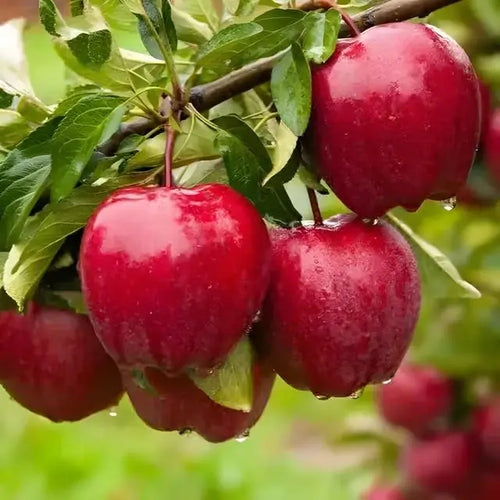Monday, September 12
Growing Apple Trees in Your Garden
Apple is a delicious fruit, and the apple tree can be easily planted in a home garden. Apple is known to have many health benefits, and it is rich in antioxidants.
The tree can grow up to a height of 35- 40 feet, but there are other smaller varieties also available in the market. Appletree is propagated by the method of grafting in which a scion is grafted onto a rootstock. You can buy dwarf rootstocks from a nursery that are ideal for a home garden. Apples cannot self-pollinate, so you need to plant at least two different varieties together so that cross-pollination occurs.
Choose a site that is perfect for the plant to thrive. It will need a well-drained and sunny spot to thrive. There should be enough spacing between plants, so they do not overcrowd each other on maturity. While planting the graft, ensure the graft union is about 2 inches above the ground to avoid roots growing from the scion. Once you have planted the apple plant, water it properly regularly. Before the growth stage hits, you will have to prune the plant as initial pruning helps stabilize the tree when it matures. Pruning will ensure that the roots are more vital to support the plant when it grows big.
If the soil is not relatively excellent and rich in nutrients, then you will have to use fertilizers so that fruit production is better. It is advisable to use only the recommended quantity of fertilizers as excessive use can damage the tree and result in poor quality fruit. Apple trees can get infected with many diseases and pests, so look out for such problems and remove infected fruits; otherwise, the disease will spread to other parts.
These are essential tips for growing and maintaining an apple tree in your home garden. At the time of harvesting, you can pick the fruits from the branches, and you can also engage your family members to help you. It will be a gratifying moment for you as a gardener.
Source of Information on Growing Apple Trees
https://www.tnnursery.net



















































